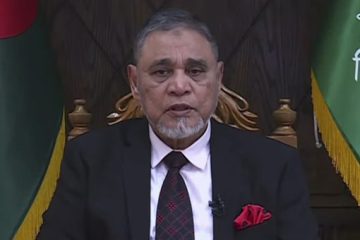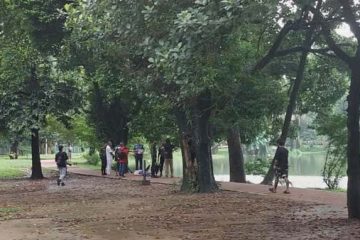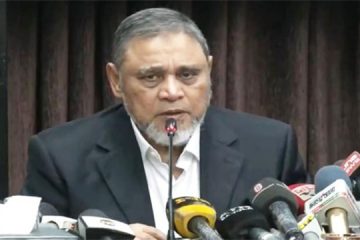The map of Bangladesh is likely to be changed slightly as Dhaka and Delhi are expected to settle the international land border by June, senior government officials said.
The two countries on Saturday began signing 1,129 strip maps legalising most of the 4,156km working land boundary.
The total process that includes resolution of disputes regarding the adversely possessed land, 6.5km undemarcated land boundary and exchange of enclaves between the two countries would be completed by June, the foreign secretary, Mohamed Mijarul Quayes, said at a press briefing on Saturday.
The strip maps are signed in line with the Land Boundary Agreement 1974, he said at the briefing at the foreign ministry.
Two plenipotentiaries — the Bangladesh high commissioner in New Delhi, Tariq Ahmed Karim, and the Indian high commissioner in Dhaka, Rajeet Mitter, started signing the strip maps at the Directorate of Land Records and Survey before the visit of the Indian prime minister, Manmohan Singh, to Dhaka early September.
They will sign all the 1,129 strip maps, prepared and verified by each other, to resolve the decade-old problems. Both will sign eight copies of each map.
The land minister, Rezaul Karim Hira, the home minister, Sahara Khatun, the foreign minister, Dipu Moni, the state minister for home, Shamsul Haque, the state minister for land, Mustafizur Rahman, the chairman of the parliamentary standing committee on the land ministry, AKM Mozammel Haque, and senior officials of the ministries concerned, among others, attended the signing ceremony, which they termed a historic occasion.
‘I believe that the border situation between the two countries will become more peaceful with the signing of the strip maps,’ Sahara said.
She added that the border demarcation work had started in 1948 after the partition as the two countries share an international border of 4,156 kilometres.
Dipu said that it had taken about 56 years to legally recognise the boundary line between the two countries as the first strip map was prepared in 1956.
This signing of strip map was a follow-up on the the Mujib-Indira land boundary agreement, she added.
Rajeet Mitter said that a clearly demarcated border was important for both the countries which have many things in common, including a long border.
‘The land boundary agreement of 1974 has yet to be executed and ratified. The signing of the strip maps will legitimise the agreement,’ Tariq Ahmed said.
Land departments of the two countries have so far prepared 1,129 strip maps — 628 for Paschim Banga, 269 for Tripura, 139 for Meghalaya, 93 for Assam and 20 for Mizoram section to resolve the long-pending border disputes in keeping with the Mujib-Indira land boundary agreement of 1974.
A strip map is an unscaled drawing of a route that includes critical points along the border, usually incorporating distances, roadside features and town facilities on a simple flip-over style map.
Officials said that the two governments were also working to resolve disputes about 6.5km undemarcated boundary, exchanges of enclaves and adversely possessed land of the two countries before Manmohan Singh visits Dhaka in September 6–7.
Asked whether there is any possibility for any change in Bangladesh’s map, the foreign secretary avoided giving a direct answer.
‘It depends on how the countries resolve issues of adversely possessed land, 6.5km undemarcated boundary and exchanges of enclaves,’ Quayes, who attended the signing ceremony, said.
The two sides will require to sign an addendum to the LBA 1974 if the two countries decide to exchange habitats and bring about changes in the use of land, he said.
The prime minister’s adviser Gowher Rizvi in New Delhi in the past week said the land boundary agreement would not only change the map of India, but it be the first boundary resolved that India has with any of its neighbours, as reported by the Times of India on August 19.
The agreement will essentially formalise the status quo on enclaves and areas under adverse possession — there will be no transfer of territory or people, Rizvi said.
The 53,000 people residing in the enclaves, who have just been counted in the first ever census there, will get the citizenship of the country they reside in, he said.
If they want to change their status, they will need to go by normal channels, he added.
There are 1.5 kilometres of un-demarcated border at Doykhata in Nilphamari, two kilometres at Muhurir Char in Feni and three kilometres at Lathitila in Moulvibazar.
Diplomatic observers expect the two countries to resolve the decade-old disputes involving 3,000 acres of Bangladesh land and its 51 enclaves with an area of 7,110 acres inside India and 3,500 acres of Indian land and its 111 enclaves with an area of 17160.63 acres inside Bangladesh.
Courtesy of New Age




















